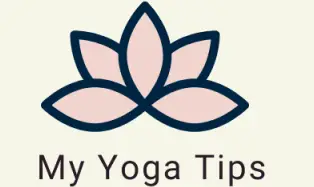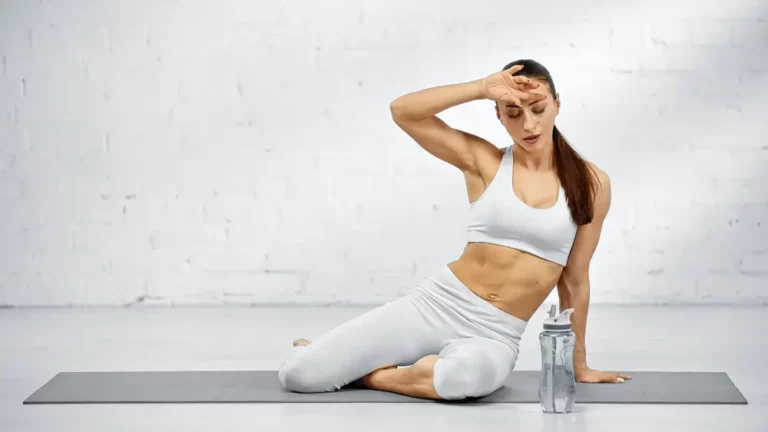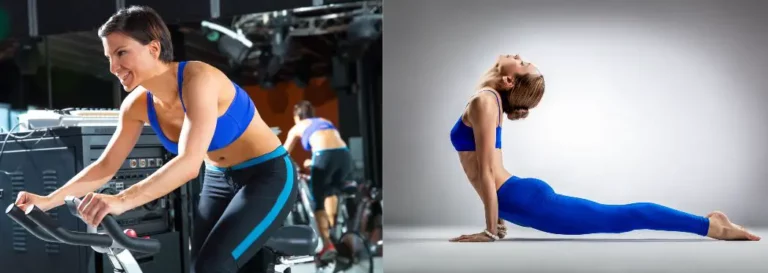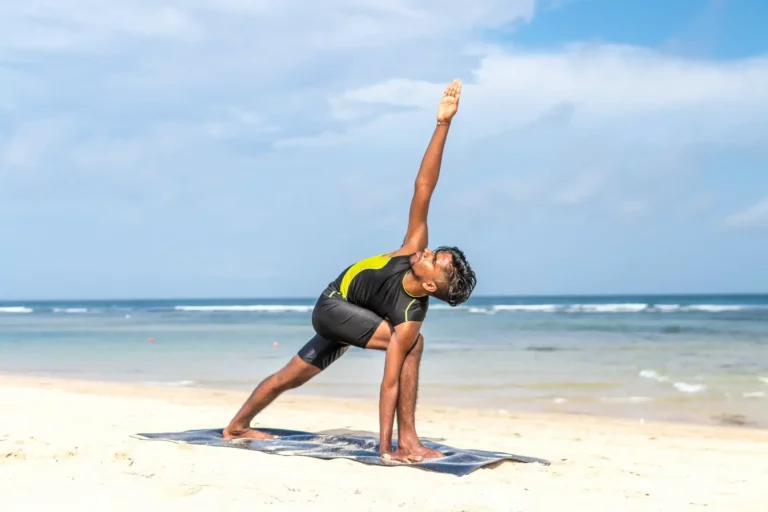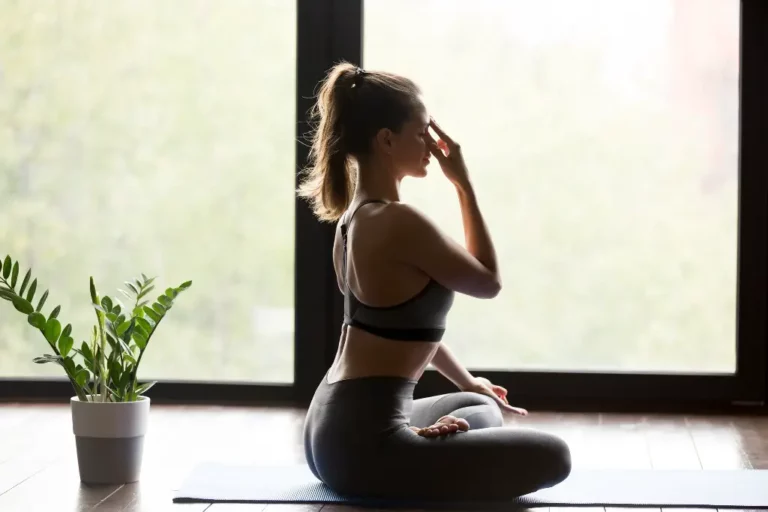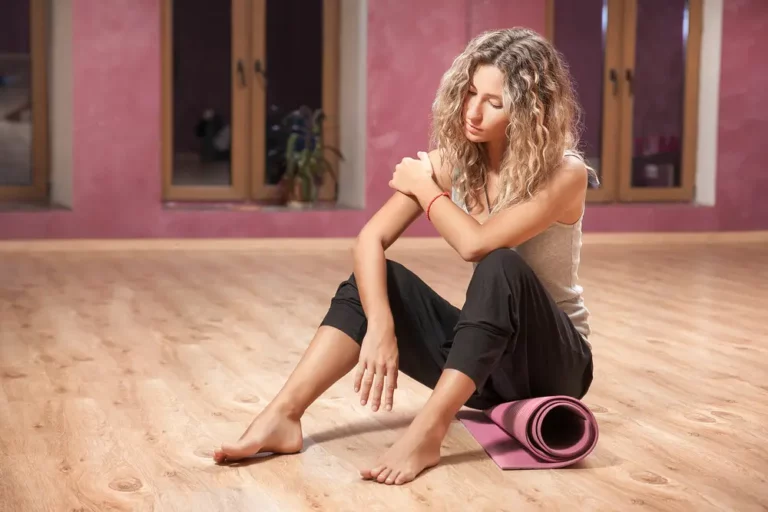Step-By-Step: How To Do Yoga Without An Instructor
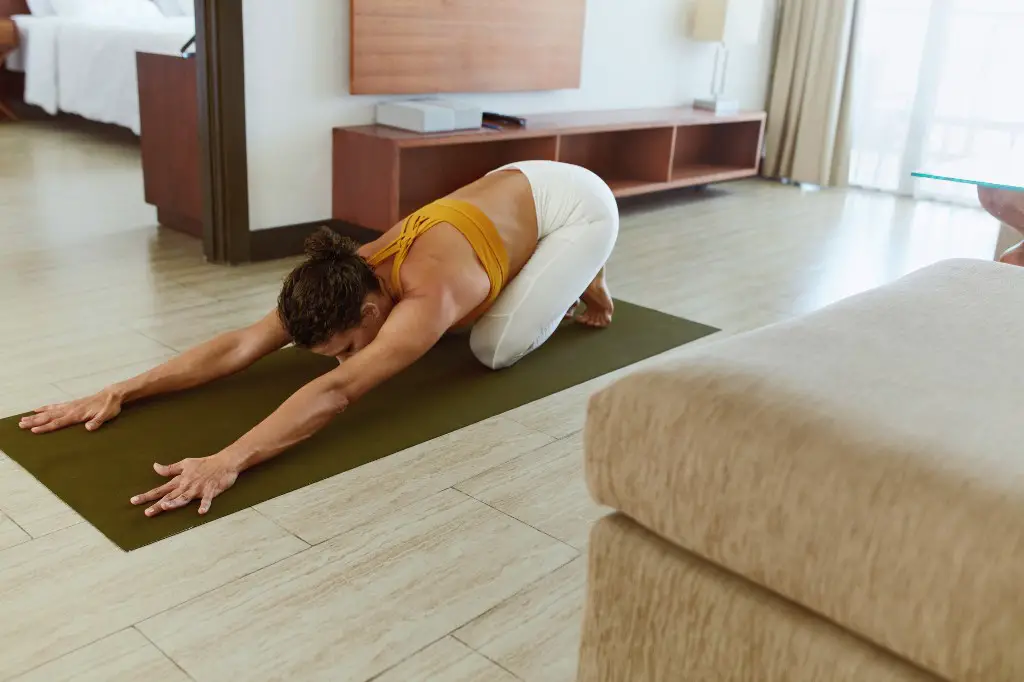
You want the calm mind and toned muscles that yoga promises. But you want to get these results in your time, in your space, in your way (you know, in slouchy PJs with scruffy hair).The problem is that you’re clueless about starting a yoga routine on your own. Coming up: a step-by-step guide to doing yoga without an instructor.
To do yoga safely without an instructor, you need to know how to get into various poses with proper alignment. Be guided by resources like apps or a digital yoga pose directory. You can then put poses and breathwork together into sequences to suit your fitness level, needs, and preferences.
There are perks to doing yoga alone, but it’s daunting having no one to guide you, check your form, and motivate you. You can conquer these hurdles, though. Here’s all the prep work and pointers you’ll need to create your own rewarding yoga routine.
How To Start Doing Yoga Alone
These steps will get you closer to becoming a yogi – without you having to leave your home.
Step # 1: Set Your Expectations For Your Yoga Practice
Be kind to yourself when choosing your yoga goals. You won’t be able to do a headstand overnight. But you will become calmer, more focused, and more flexible with every session.
Progress at your pace instead of pushing yourself to instantly perfect every pose. A big part of yoga is working towards finding inner peace, so no self-criticism allowed!
Perhaps you’ve heard that yoga sessions should last 90 minutes. The idea that you need to practice yoga for an hour and a half before you’ll experience benefits is another expectation you can drop right away if you want to. Start with 30 minutes (or however many minutes you can fit in) of practiceand build from there.
Step # 2: Teach Yourself Yoga Basics
Start by familiarizing yourself with the different types of yoga and popular poses, like Downward-Facing Dog, Cobra, Warrior I, Warrior II, Tree Pose, Seated Forward Fold, Bridge Pose, Supine Twist, and Cat-Cow. You can learn how to do these poses by copying GIF or image demos coupled with instructions.
Once you’re confidently moving into the different poses, try to get the hang of a classic sequence of poses called Sun Salutations. This good-to-know sequence is included in many yoga routines, and when you’re short on time, you can even do it (just once or many times) as a stand-alone yoga sesh.
Next, get a feel for yoga breathing techniques. Breathwork is an essential part of yoga. You can do yoga breathing exercises anytime, anywhere, or combine them with poses. Breathe in while you lengthen, reach, and open up your body, and breathe out while you twist, release poses, and ground yourself.
Step # 3: Plan Your Yoga Routines
Now that you’ve explored basic yoga poses, you can put them together intopersonalized routines.
Tips For Planning Your Yoga Routines
Follow these tips to help you create a yoga routine that’s spot-on for your fitness goals, needs, and preferences.
Begin Your Yoga Sessions With Breathwork
Prepare your mind and body for the upcoming yoga exercise with a few minutes of mindful breathing. Sit or stand comfortably, still your mind, and breathe deeply and slowly. Focus your thoughts on the present moment, listen to the sounds around you, and tune into how your body feels.
Continue breathing slowly and deeply as you gently circle your ankles, knees, hips, shoulders, elbows, and wrists.
SelectPoses For Your Yoga Sessions
Pick and choose your session’s poses from a yoga pose directory according to your fitness level and mood. Start with simple poses, saving the more challenging ones for when you’re sure you know what you’re doing.
There are different categories of yoga poses. Some build strength in your core and arms, some help open up your shoulders and hips, some are restorative, some are balancing, some are standing poses, some you do while sitting. Get in touch with how you’re feeling and let that guide which poses you choose.
If your shoulders are tense, for example, add some shoulder-opening poses. If you want to improve your posture, bring in a few core-strengthening poses. If you’re feeling frazzled, focus on restorative poses. Choose 10 to 12 poses for a half-hour-or-sosession.
End Your Yoga Sessions With Stillness
Finish your sessions by lying on your back with your eyes closed, legs straight, arms at your sides, and palms facing up (this relaxing pose is called Corpse). When you feel ready, get up slowly.
Resources To Guide Your Yoga Routines
If you’re a total yoga newbie who doesn’t feel ready tocreate a routine from scratch, get guidance from resources like books, apps, GIFs, and pre-recorded or live online yoga classes.
Here’s a 5-minute, 5-move routine to start your day, for example. Or try this Vinyasa flow yoga workout(which shows you how to use breathwork to complement yoga poses) suitable for all fitness levels. If you like the convenience of phone-led exercise, consider downloading a yoga app like Yoga Studio or Down Dog.
Explore different yoga styles and instructors, but first check that the instructor is qualified and experienced.
Step # 4: Create A Space For Your Yoga Practice
Set up your home yoga studio in a quiet, clutter-free spot (you can push furniture out the way if your home isn’t spacious). You don’t need much space, just enough for your mat (and your laptop or phone if you’ll be getting digital guidance).
Having a designated yoga area will up the chance yoga will become a natural part of your home routine, so stick to one go-to yoga zone.
As far as equipment, you can get by with just a non-stick yoga mat (even a towel will do). Nice-to-have extras include blocks (or use books), straps (you could use a belt or dog leash), and bolsters (or try pillows).
Step # 5: Make Yoga PracticeYour Own
It’s time for your first yoga-session-for-one. You’re in control of how the session progresses, so listen to your body and go at your pace. Want more time to practice a pose? Take it. Feel uncomfortable in another pose? Skip it.
Your mission during yoga practice is to support your body, not strain it. Rather than forcing yourself into poses that feel wrong, adapt the poses to suit your needs.
So, instead of straining to reach the floor in Standing Forward Bend, for example, bring the floor closer to youby placing your hands on blocks (or thick books). Or, if you struggle to stay steady when in balancing poses like Tree, hold onto something sturdy for support.
Step # 6:Check That YourYoga Form Is Correct
The trickiest (and riskiest) part of doing yoga without an instructor is trying to get your form right. With no one watching your moves, it can be difficult to tell if you’re practicing yoga safely, with good alignment.
Experts tend to advise that beginners have a few in-person yoga sessions under the guidance of a well-trained instructor before they go it alone. An instructor can show you how to get into the poses safely, minimizing your injury risk.
If you can’t practice yoga poses with an instructor present, take time to fine-tune the poses on your own. Carefully compare your poses with the demo poses in a yoga pose directory or app (check yourself in a mirror or phone recording).
Step # 7: Keep Yourself Motivated To Practice Yoga Regularly
Yoga’s benefits increase with consistent practice. But doing yoga on the reg is challenging when you don’t have someone encouraging you to keep going.
Make it easier to stick to your yoga sessions by putting them in your calendar. When it’s mat time, set a timer for just half an hour and commit to practicing for at least that long, then take a deep breath, and start.
The more you do yoga, the more of its mind-clearing, calming effects you’ll feel, the more you’ll want to make it a part of your life.
Read my article about 6 Ways To Make Your Yoga Routine Actually Stick
Conclusion
It’s a wonderful thing to customize your yoga routines to boost your wellbeing, no matter your mood or needs. Whether you want an energetic routine to wake you up or restorative practice after a tough day, you can pick the poses and pace to give you what you need at a specific moment.
With many different yoga styles and more than 80 poses to explore, a lifetime of enriching yoga practice awaits you.
